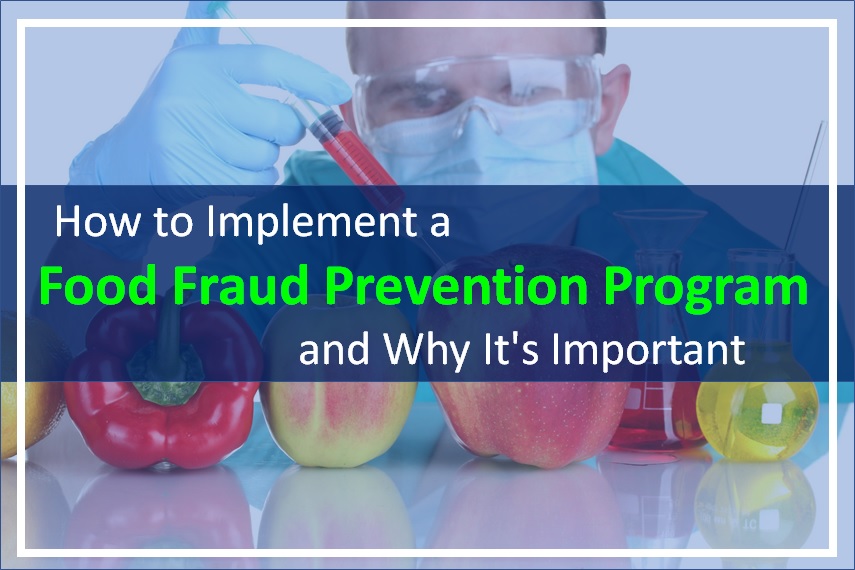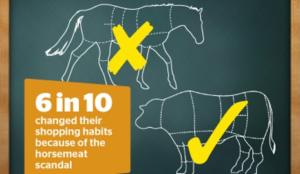 What is food fraud? Do you remember the horse meat scandal? It originated in Ireland at the beginning of 2013, when food inspectors found out that beef meat sold at common supermarkets contained considerable traces of horse meat. From there, over 15,000 tests were carried out across the EU, with worrying results: over 300 turned out to contain horse meat DNA.
What is food fraud? Do you remember the horse meat scandal? It originated in Ireland at the beginning of 2013, when food inspectors found out that beef meat sold at common supermarkets contained considerable traces of horse meat. From there, over 15,000 tests were carried out across the EU, with worrying results: over 300 turned out to contain horse meat DNA.
The horse meat scandal was the pivotal point towards a stricter food fraud legislation in the EU. In response to that incident, the Food Fraud Network was formed, with the purpose of improving controls, collaboration and exchange of information among member states.
In spite of that, food adulteration cases continue to happen, and not only in the EU.
Horse meat for example, is still being sold as beef, and organized crime groups are also taking an active interest in the illicit trade.
In this article we will explain, what is food fraud, and why a risk mitigation policy is very important for a food producer.
Many types of food fraud, one main reason
What is food fraud anyway? In short, it happens every time food is not what it’s purported to be. A longer but more comprehensive way to describe it would be:
the deliberate and intentional substitution, addition, tampering, or misrepresentation of food, food ingredients, or food packaging; or false or misleading statements made about a product for economic gain.
There are two things we can take away from this definition: there are many ways to commit food fraud, and the one main motivation is economical gain. In fact, Economically Motivated Adulteration (EMA) is another name for it.
The horse meat scandal was a very typical case of EMA, where a food is mixed with a cheaper ingredient to reduce its production cost and increase profit. Meat tops the list of food fraud cases because it’s expensive to produce and buy, it’s widely consumed, and adulteration with cheaper substitutes is hard to detect for the average consumer.
There are, however other perfect candidates with the same characteristics.
Honey. It started to be adulterated in the 70s, when high-fructose corn syrup first appeared on the market and proved to be a cheaper fraudulent substitute. Already in 2009 this article in Food Safety Magazine described the latest advances in honey adulteration detection.
Still in 2016 however, 14.2% of honey is likely to be adulterated, according to an EU report.
 Extra virgin olive oil is often blended with cheaper seed oils, or non-extra virgin olive oil. The website Olive Oil Times keeps track of the cases of oil adulteration in the news, where it seems clear it’s a big business for organized and non-organized crime.
Extra virgin olive oil is often blended with cheaper seed oils, or non-extra virgin olive oil. The website Olive Oil Times keeps track of the cases of oil adulteration in the news, where it seems clear it’s a big business for organized and non-organized crime.
Fish. Last year, a report from nonprofit ocean conservation group Oceana revealed how “seafood swaps” is a global practice. The typical example is Asian catfish, which is mislabeled and sold as eighteen different – and more expensive – types of fish.
Adulteration is far from being the only type of food fraud. Another common category is straightforward counterfeiting, which happens when a food product with a specific origin and/or processing method is substituted with similar, cheaper and lower-quality ingredients. A common case would be mixed grated cheese sold as Parmesan.
The importance of a food fraud risk mitigation program
The list of food fraud types is in fact longer. What they all have in common however, is opportunity: whenever there is potential for high profits with low risk of being discovered, there may be a food fraudster in action.
At a more general level, food fraud is part of the ongoing battle between criminals and public authorities. For well-meaning food companies however, it’s extremely important to implement a risk mitigation program. The risk of not doing so is to be caught in the middle and become both victims and unintentional perpetrators of food fraud crimes.
Having a food fraud prevention program will also make your food safety and sanitation better. Fortunately, the majority of food fraud cases don’t turn into significant food safety incidents. In the case of the horse meat scandal for example, some of the samples turned out to contain phenylbutazone (also called “bute”), an antibiotic commonly used on horses, which is toxic for humans. The detected quantities however, were not deemed high enough to pose a health risk to consumers.
The relatively low health risk doesn’t make the link between food fraud and food safety any weaker. Whenever there’s a breach in the food supply chain controls, anything may come through. Even when food fraudsters have no intention of harming people’s health, the circumstances in which those crimes are committed don’t always allow for them to take precautions.
Legal and certification requirement
In the USA, the Food Safety Modernization Act (FSMA) has given the FDA much more punch when it comes to tackling food fraud. FSMA covers all aspects of food safety and integrity, from mitigation strategies against intentional adulteration, to food transportations procedures, to foreign supplier verification programs. Next to this FSMA now allows the FDA to not only address issues at company level, but also start criminal investigations on individuals.
Several countries across the globe are following suit, like Canada, China and even in Europe authorities are acting more stringent especially in cases of economically motivated adulteration as the law allows for civil action towards individuals.
Next to and driven by the legal changes, food fraud prevention is rapidly becoming a mandatory part of normal food safety practices for a wide range of companies operating internationally at any level of the food supply chain. The four main sets of standards are:
· BRC (British Retail Consortium) Global Standard issue 7 now includes specific references to product authenticity, claims and chain of custody.
· IFS (International Food Standard) has included an entire new chapter in version 6. In 2018 version 7 is expected expanding this to chain of custody as well.
· FSSC (Food Safety Certification System) 22000 version 4 now includes mandatory requirements for companies to perform a vulnerability assessment and a separate food defense assessment.
· SQF (Safe Quality Food) has renamed the “ Site Security” section as “Food Defense & Food Fraud” and included requirements for sites to perform a food fraud vulnerability assessment.
On top of this, well-established players in the market (e.g. Coca Cola and Cargill) are requesting specific tamper-evidence solutions from their suppliers to reduce the risk of food fraud or other types of adulteration.
How to prevent and detect food fraud
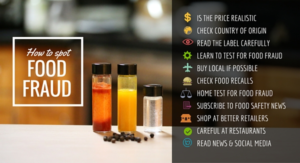 An effective food fraud prevention program is a combination of science, data and common sense.
An effective food fraud prevention program is a combination of science, data and common sense.
The first step is to do a vulnerability assessment test, where you answer a basic question: how likely is my company to be on the receiving end of food fraud? To do that, you’ll have to audit your suppliers first. Here is a series of question to guide you:
- Do they have a good reputation? Were they involved in food fraud incidents in the past?
- What’s the level of trustworthiness of the country where they operate?
- Who are the suppliers of your suppliers?
- Is it a new supplier, or do you have an established relationship with them?
- Is the documentation they provide complete and clear?
- Are the ingredients you buy from them at risk of adulteration?
- Are their products certified?
Of course, operators need to be aware that the risk of food fraud can also come from within the company. Therefore, the same question needs to be asked internally as well: how likely is my company to engage in food fraud and what can we do to prevent this from happening? In case of a predisposition to food fraud in your own company, it might be good to consider preventative measures like four-eyes principles for critical processes, and random testing for sensitive products.
Using vulnerability assessment tools
Answers to critical questions need to be based on data rather than on preconceived ideas. To do that, there are two free tools you can use.
The first one is a free Excel tool called Worldwide Governance Indicators, developed by The World Bank. You can download it here. And here is a quick tutorial on how to use it.
The second tool, also Excel-based, is provided by the nonprofit organization SSAFE (Safe Supply of Affordable Food Everywhere). It allows you to assess food fraud vulnerability in the whole food chain, whether it’s for a specific ingredient, product, or even the entire company.
Monitoring economic factors
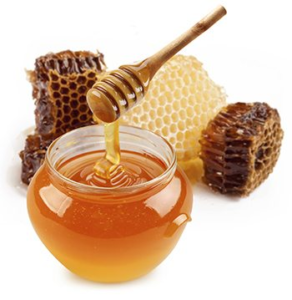 The next thing will be to monitor changes in the market, which food fraudsters could see as a good opportunity. You should pay particular attention to increases in market price. Prices may soar for several reasons: because the harvest of a certain crop was bad, or the product is expensive by nature (like in the case of New Zealand’s manuka honey), or there’s an increasing demand in a particular market (like wine in China).
The next thing will be to monitor changes in the market, which food fraudsters could see as a good opportunity. You should pay particular attention to increases in market price. Prices may soar for several reasons: because the harvest of a certain crop was bad, or the product is expensive by nature (like in the case of New Zealand’s manuka honey), or there’s an increasing demand in a particular market (like wine in China).
Using Food Fraud Databases to gather information. Food fraud databases are also useful to gather statistics on food fraud and information on specific cases.
There are four that we recommend:
HorizonScan. This is a database that combines 15 years’ of data from 110 food safety authorities across the globe. It give a good overview of all the past and current food fraud related issues. Have a look here and ask for a free, two-week trial of the most advanced database.
The Food Fraud Network. It’s a cross-border cooperation between the EU countries, to exchange information about real or suspected cases of food fraud. Strictly speaking, it’s not a database, but the network has a wealth of information and publishes a monthly and annual report which is free to access. From the 2016 report for example, we can see that mislabeling is the most frequent violation, or that meat and meat products (other than poultry) are the most frequent non-compliant foods, followed by fats and oils.
USP’s food fraud database. This database is a collection of cases gathered from different sources worldwide. It’s provided by The United States Pharmacopeial Convention, and is available through a yearly subscription.
The Food Fraud Risk Information. It’s a Trello storyboard updated by Food Fraud Advisors. This tool is worth mentioning because access is free and it contains a lot of useful information not only on food incidents, but also on the vulnerability of specific foods.
Do your own in-house tests. Fighting food fraud is first of all a matter of prevention, which is why you should start by taking a good look at what’s happening outside of your processing facility. In-house tests however, are also important, not only to detect any possible incident but also to get important feedback on the efficacy of your mitigation policy.
Although testing for food fraud can be expensive, Near-Infrared (NIR) or Fourier-Transformed Near-Infrared (FT-NIR) spectroscopy are a quick, affordable and reliable alternative to conduct a general inspection.
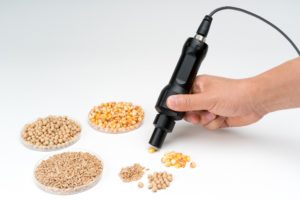 NIR spectroscopy measures the amounts of the different components in a food sample, by illuminating it with near-infrared light. Depending on the compounds in the sample, light is either absorbed, reflected or dispersed. Different compositions will cause different reactions.
NIR spectroscopy measures the amounts of the different components in a food sample, by illuminating it with near-infrared light. Depending on the compounds in the sample, light is either absorbed, reflected or dispersed. Different compositions will cause different reactions.
First, a test is done on an unaltered sample. The result will represent a benchmark, the unique “fingerprint” of that given food as it’s expected to be. Following tests on similar samples will then be matched against the validated fingerprint. If any discrepancy occurs, the batch can be sent to a laboratory for further analysis.
NIR spectroscopy won’t tell exactly what’s wrong with a sample, but it can be an extremely useful monitoring activity. If needed, there are of course more comprehensive lab tests that can be done, like HPLC (High Performance Liquid Chromatography), Mass Spectrometry or DNA testing.
On the other hand, NIR technology has clear advantages for food operators:
- it’s affordable;
- it uses portable devices;
- it gives results in real-time;
- it’s non-destructive;
- there’s no use of chemicals involved.
Conclusions
Having a tried and tested food fraud prevention program in place is as important as having a food cleaning and sanitation protocol. It’s not only a matter of defending your reputation. As a food producer, you are part of the supply chain, so it’s your duty to protect consumers from food that, in the best of cases, is not what they paid for.
In spite of the great attention that food fraud prevention is receiving from public organizations, academic institutions and the food industry, there is still a lot to be done to have enough reliable information freely available. While for food safety all major countries and also the WHO have public databases where comprehensive and updated information is freely shared, in the case of food fraud most of it is still behind paywalls.
We believe that it’s time for public authorities to fill a vacuum that right now is occupied by private companies (like the USP) and voluntary initiatives (like the Trello storyboard), and raise the level of coordination and openness to prevent food fraud.
Additional blogs about Food Fraud:
Food Fraud & Other Supply Chain Hazards
New EU Official Controls Regulation – Implications For Authorities And Businesses
How The New Official Controls Regulation Of The EU Will Affect The Food Industry
Interesting Programs of Food Safety Experts:
Replay Webinar A Successful Approach To Foreign Object Management

